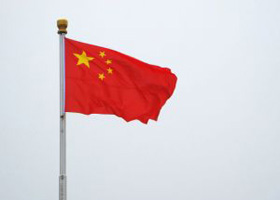

Today, what’s changed in China can be visually experienced in cities like Beijing, where the walls are gone and the landmarks are open and visible.
“There has been a change in attitudes and a new respect for open ideas,” says Horrocks, adding that we should ask ourselves why we’re so dismissive of China as a standard- bearer of openness.
“China believes it is a standard-bearer of globalization — it’s rhetoric, but it’s not empty rhetoric,” he argues, adding that there has been a “relentless” negativity about China.
“Contrary to what you’re hearing in the West, globalization is not a dirty word in China — it is a key thrust in their economy and policy.”
Beyond the Negativity
China’s change in living standards has been a testament to the success of China’s mission to open its borders and globalize as millions of people have moved from poverty to the middle class. As capitalism drives new enterprise in China, as opposed to the bureaucratic entities of the past, Chinese businesses are becoming global enterprises, intertwined with the world economy. “It’s not just Asia versus the U.S.,” Horrocks explains. Today, Chinese economic diplomacy is transforming the rest of Asia.
China’s outward expansion and investment in countries like Indonesia, Cambodia and Vietnam is also helping meet its own challenges, such as an aging population and a need to expand its manufacturing base.
“There is a huge tailwind in China,” Horrocks asserts. “It’s the most open to new ideas, to efficiency and to population living in households reform. It is, in fact, the standard-bearer of globalization.”
What does that mean for investors? It means that Asian economies — among all the emerging markets —are the only ones that have truly achieved “economic takeoff.”
People are saving, educating themselves, expanding their manufacturing bases — and they’re open to new ideas, Horrocks adds, noting that none of the activity has been government driven.
So why aren’t we seeing better performance from Asian markets? Horrocks explains that nominal GDP growth rates aren’t moving up as quickly, but there is considerable out-performance in Asia relative to the U.S. He believes the current lull in growth rates is a blip — and that high savings rates and improved earnings will translate to better performance.
The good news is, Asia hasn’t allowed wages to decline in line with productivity growth and that has created a better share between capitalists and the workforce. Growth will follow. Investors should cut through the negativity and understand that Asian countries are embracing globalization — and, based on that, they ought to take a dedicated long- term and strategic view to the region.
An active approach is key, however, as indices are notoriously backward-looking in the region and continue to underweight the faster growing sectors of the economy.

